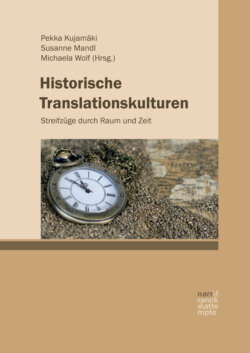Читать книгу Historische Translationskulturen - Группа авторов - Страница 33
2.1.4 Welsh
ОглавлениеAt the beginning of the nineteenth century, it is thought that 70 % of the population in Wales spoke only Welsh, 20 % only English, and 10 % were bilingual. Welsh was spoken throughout Wales, though English was more common along the Welsh-English border, in Monmouthshire and Glamorganshire in the southeast, and around the rapidly expanding port towns of Swansea, Cardiff, and Newport (Kearney 2014: 241). In 1891, the first census concerned with language distribution was conducted. It showed drastic change in the numbers of Welsh-speakers; a total of 54.4 % of those surveyed spoke Welsh, with 32.1 % of the population over the age of two speaking Welsh only, though this dropped further to 7.3 % in 1901 (Davies 2014: 81–82). Apart from industrialisation, many see the 1847 Reports of the Commissioners of Inquiry into the State of Education in Wales as having a major influence on the Welsh language in the nineteenth century. The reports, or the Treachery of the Blue Books as they were also known, portrayed the Welsh as immoral and uneducated:
[T]he Welsh language is a vast drawback to Wales, and a manifold barrier to the moral progress and commercial prosperity of the people. […] It dissevers the people from intercourse which would greatly advance their civilisation, and bars the access of improving knowledge to their minds. (Johnson et al. 1847: 66)
The reports had a detrimental effect on the language as Welsh-speakers began to believe that Welsh was an inferior language which could not offer them the same opportunities as English would, and English became the language of education.
